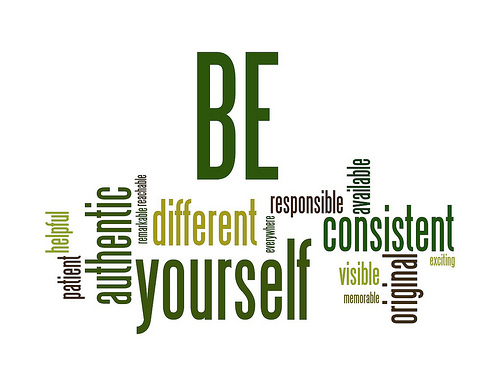
You don’t need to be a marketer to think about your personal brand. Each and every one of us conveys a unique brand that influences how we interact with and are perceived by others. This outward brand encompasses your actions, behavior, appearance and every other element that makes you a unique, separate person – creating the person others see us as (even if we see ourselves differently).
Now, unfortunately, whether or not you’ve been proactive about managing this brand doesn’t matter. Each of us has a personal brand that influences how persuasive we are and how successful we’ll be, which is why it’s so important to manage your personal brand consistently.
The first step in managing your personal brand is determining how others view it. To do this, we can use an NLP technique known as “Perceptual Positions”.
Essentially, perceptual positions allows you to review a past interaction or plan for a future exchange by examining the events that occurred from three different viewpoints – your own, your partner’s and a detached third-party. Let’s go through an example to see how this process can be applied to real-life situations in order to more fully understand the power of perceptual positions.
Suppose you work as a salesperson and recently had a meeting with a potentially high-level client to discuss the advantages your product or services bring to the table. Up until this point, you haven’t managed your personal brand at all, so you have no idea how your actions and personality were perceived by this new client.
To start, review the meeting in your mind, paying particular attention to your behavior. Try to remember the things you said, as well as the tone you said them in? Were you authoritative or timid? Did you clearly state your points or did you stutter and stammer your way through your sales pitch?
In addition, create a detailed image in your mind’s eye of your body language and physical posture. How did you sit in the meeting? Were your shoulders rolled back in a confident posture, or were you slouched over in your chair? Did you maintain eye contact, fidget with your fingers or engage in any other behaviors that would give your client clues to your personal brand?
At this point in the process, try not to apply judgments to the elements you uncover. Don’t berate yourself if your words or behaviors weren’t in line with what you’d like your personal brand to be. Instead, simply try to become more aware of how you’ve behaved in the past and how that’s strayed from the image you’d like to convey.
The next step in the process is to go through the meeting again in your mind, but this time from the perspective of your client. Envision yourself looking through his eyes throughout the entire interaction – from the time “you” walk in the door until the meeting closes with a handshake.
Now, from this new perspective, how do you regard the person sitting across the table from you? Has he effectively persuaded you to purchase his product or service? If yes, which specific behaviors made you feel you could trust him? And if not, which elements led you to avoid closing the sale? As the client in this situation, do you feel that the salesperson took your needs and considerations into account?
Finally, go through the scenario a third time, this time imagining yourself as an impartial third-party observing the scene. As you have no connection to either the salesperson or the client, you can observe their interactions in order to understand more about the personal brand each party is conveying.
Once you’ve completed the exercise, take a moment to evaluate your behaviors and interactions as part of your overall brand. For example, were you:
- Enthusiastic or soft-spoken?
- Straightforward and direct, or metaphorical in your language?
- Submissive or aggressive in your body language?
- Fidgety in your mannerisms or still?
- Dressed in a way that’s appropriate to your business level?
Each of these elements – and many, many more – play a role in developing your personal brand and determining how persuasive it is. If any of the elements you uncovered in your perceptual positions exercise run counter to what you’d like your personal brand to be, you can consciously try to improve specific characteristics of your appearance, behavior or language in future interactions.
Generally, you’ll find that it’s easier to start by applying perceptual positions to interactions that have occurred in the past. However, as you get more advanced with this technique, you’ll be able to project these three viewpoints onto future situations as well, enabling you to model the behaviors you’d like other people to see as part of your personal brand.
Image: Stefano principato
Pingback: Controlling Your Anger: What You Need to Know
Pingback: What Can Sports Fans Teach You About Succeeding in Business?
Pingback: Controlling Your Anger: What You Need to Know | Neuro-Linguistic ProgrammingNeuro-Linguistic Programming